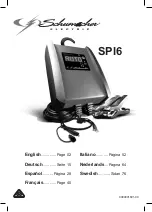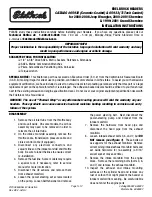
Braking system
Anti-lock brakes
33.
If snow chains are fitted, the rolling condition gives rise to signals which are suitably filtered in the con-
trol unit and the anti-lock brakes are not excluded if driving over hard, compact snow.
In conditions where the grip conditions are poor and/or the engine torque is incorrect distributed (aqua-
planing), the electronic control unit is informed through the rpm sensors on each wheel of an irregular
condition whereby the driving wheels tend to rotate at a different speed from the driven wheels.
This condition involves switching the operation of the control unit in order to prevent the sensation of
hardness during the operation of the brake pedal.
The electronic control unit has a safety circuit which has the task of safeguarding the efficiency of the
system before every departure and whilst driving.
The safety circuit carries out the following self-checks:
1. after the ignition is switched on, for about 4 seconds it controls the operation of the control unit and
the relays which operate the solenoid valves and the connection of the sensors;
2. after the engine is started up, as soon as 5 kph is exceeded, it activates the solenoid valves and the re-
covery pump for an operating check; it also checks the 4 wheel speed signals;
3. whilst driving it constantly compares the peripheral speed of the wheels with the reference speed cal-
culated, it checks the memory conditions and constantly checks the battery voltage.
If one of these faults is detected, the anti-lock brakes, whilst still ensuring the normal operation of the
conventional braking system, switch off and signal this condition to the driver through the failure warn-
ing light in the instrument panel coming on.
The electronic control unit is informed that the driver is braking by the signal arriving from the switch on
the brake pedal. This information is useful in the case of strong deceleration, which causes the wheels
to slip, followed by strong braking or in the case of uneven road surfaces (undulating, cobblestones)
which could cause variations in the speed of the wheels for reasons not connected with the braking in
progress.
Under these circumstances the microprocessors process a strategy linked to the variations in the speed
of the wheels at these particular moments, restoring the braking in progress to within the correct param-
eters. Since these are particular braking conditions, a faulty connection of the switch on the brake pedal
with the control unit will not adeversely affect the operation of the system. For this reason it is not sig-
nalled by the warning light coming on, neither is the A
.B
.S. system disabled.
Electro-hydraulic control unit
The electro-hydraulic control unit is connected to the brake pump and to the brake caliper cylinders by
means of the braking system pipes.
Its task is to vary the pressure of the brake fluid in the brake caliper cylinders corresponding to the sig-
nals coming from the electronic control unit.
It is made up of eight two-way solenoid valves (two for each hydraulic circuit) and a twin circuit electric
recovery pump.
Marea - Marea Weekend
4
Print no. 506.763/10
Summary of Contents for 1998 Marea Weekend
Page 10: ......
Page 83: ......
Page 90: ......
Page 95: ......
Page 133: ...f c...
Page 298: ...Engine Fuel system Marea Marea Weekend ft 99 update 3N30GJ01 3N30GJ02 28 Print n 506 763 15...
Page 342: ...Marea Marea Weekend 99 range Engine Fuel system Copyright by Fiat Auto 17...
Page 391: ......
Page 398: ...Engine Fuel system Marea Marea Weekend 99 range 6 Print n 506 763 14...
Page 420: ......
Page 452: ......
Page 470: ...I...
Page 499: ......
Page 501: ......
Page 580: ......
Page 656: ......
Page 788: ......
















































